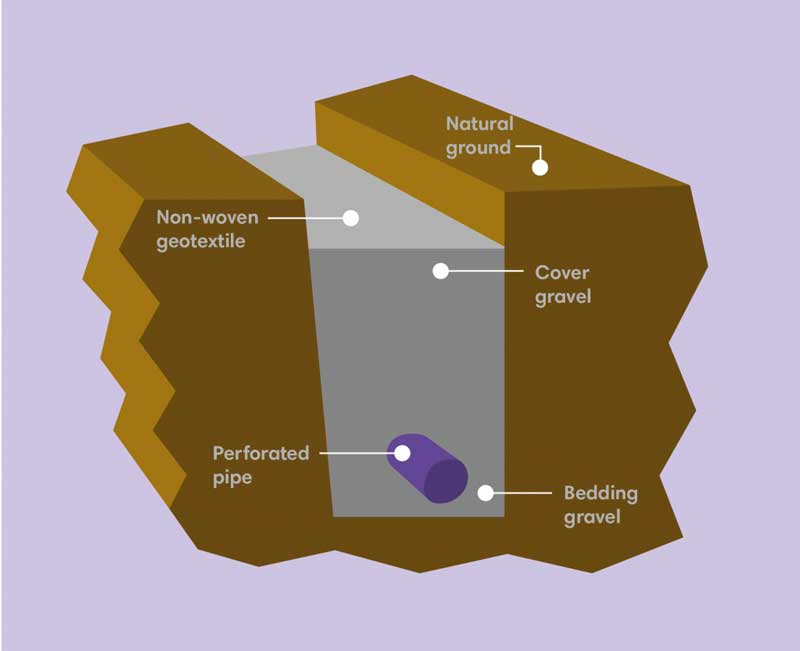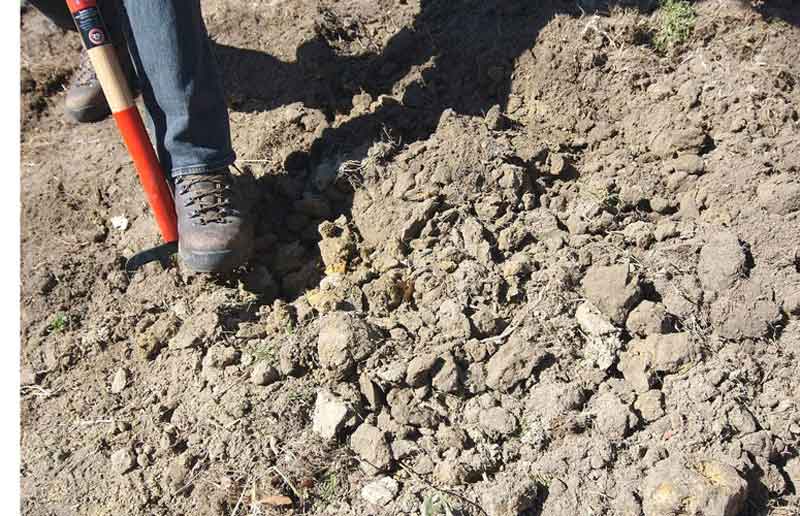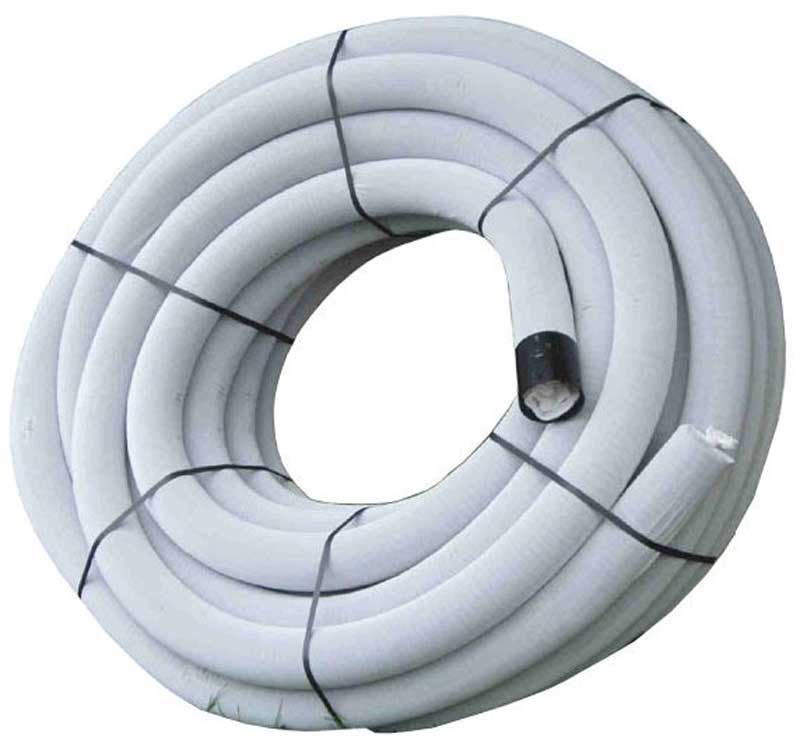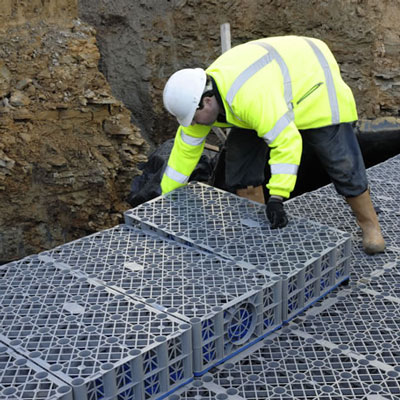Land drains, commonly known as perforated drain pipes, are used in domestic, commercial, agricultural and industrial areas to stop the ground from being waterlogged. The ground can be waterlogged due to excess water and rainfall or due to impermeable types of soil such as clay. By removing the water and directing it elsewhere you are preventing the standing water, flooding of other areas nearby and poor irrigation of fields.
Below we cover everything you need to know about land drains and why they are a vital solution for surface water drainage.
Table of contents
- What type of land drains are there?
- How do land drains work?
- Where should a land drain be installed?
- Installation tips for land drains
What type of land drains are there?
There are two types of land drains: twinwall land drains and land drain coils. Both types are manufactured from PVC and come in a variety of diameters and lengths fit for different applications. The most common coil sizes are 25m and 50m in length although larger, specialist lengths are available from certain manufacturers.
Twinwall land drain pipes are recommended for use with applications where the weight on top of the pipe may be substantial. For example, this could be where the land drain will be below a driveway. Twinwall pipes are more robust and stronger due to their rigid design.

What colour should land drains be?
Ducting has a universal colour code system to ensure the safety of the pipe and anybody working around it, but land drains don’t have this system. They are typically black in colour and this has no bearing on contents because it should only be water.
How do land drains work?
Land drains work by allowing water to flow into a pipe in waterlogged areas. When soil is saturated either due to the type of soil or how much rainfall there is, no more water can be absorbed so the ground becomes waterlogged. Thanks to perforations in a pipe and a layer of aggregate, water flows naturally down the aggregate and into the perforations of the pipe.
Once the water is in the land drainpipe, thanks to a gentle gradient on installation, the water flows to the designated disposal point. A land drain has a layer of loose aggregate or shingles surrounding it so water has a clear direction to travel in when it cannot gain access to the saturated and compacted soil.
The water from a land drainage system is taken to usually 1 of 3 possible places. It can be directed to a nearby water source like a stream or river, with permission of the Environment Agency. Land drain water can be directed to a storm drain and it can also be directed to a soakaway system in an area where the soil is more amenable.
Where should a land drain be installed?
A land drain should be installed in any areas of significant waterlogging or where the soil has performed badly in a percolation test. A local drainage company will be best placed to advise any DIY or domestic areas if their garden or land is at risk of waterlogging by performing a percolation test. You’re able to perform a DIY percolation test but for large swathes of land, it’s not worth the risk when many companies may offer you a test for free. Below is a picture of compacted clay soil.

Be sure to check with the local authority to make sure wherever you plan to deposit the water collected in the land drain system is okay with them. Watercourses are sometimes protected and storm drains belong to local authorities so this must be checked and approved. You risk large fines if found not adhering to council policy.

Remember, storm drains have a maximum capacity too. When directing water to a storm drain the council will give you a maximum flow rate that tells you how many litres of water per second you’re allowed to deposit into the storm drain. If you exceed this, you risk flooding the storm drain and backing up your land drain.
Installation tips for land drains
Below are some tips and tricks for installing a successful land drain system.
 Prevent sediment from entering the pipe
Prevent sediment from entering the pipe
When installing a land drain it’s best to choose 1 of 2 methods for preventing soil from entering the pipe. This will cause a build-up of sediment either in the pipe or in the soakaway or watercourse and eventually cause issues. Choose between a catch-pit or using a non-woven geotextile around 100mm above the top of the land drain. (Some brands offer a pre-wrapped coil pipe but this could limit diameter and length choices.)
Use a sensible gradient
The recommended gradient for land drain pipe is 1 in 150. The gradient should certainly not be any more than 1 in 100 as the water flow will too fast and too aggressive.
Choose the right soakaway crate
When you’re connecting a land drain pipe to a soakaway system choose the right soakaway crate. The right soakaway crate is one that’s robust and strong so should be made from plastic. Traditional, old-school soakaway crates may not be primed to deal with a constant and strong flow of water.
Plan for maximum efficiency
Plan the layout of a land drain system to ensure that the area you’re trying to drain is no further than 2.5m away from the land drain’s position below the ground. That’s why the most common layout seen in these types of systems is a herringbone pattern. For larger areas a 10m radius is recommended as a 2.5m radius would in theory quadruple the cost.
Now you know the hows and the whats, it’s time to head on over to our range of land drainage to discover what we’ve got for you. Whether you’re creating a brand new system or replacing existing parts, we’ve got you covered.















